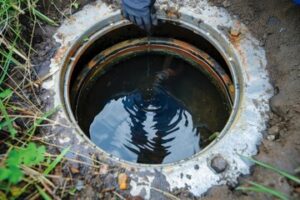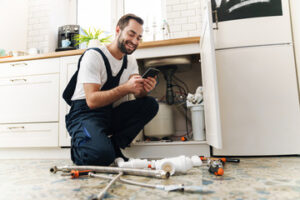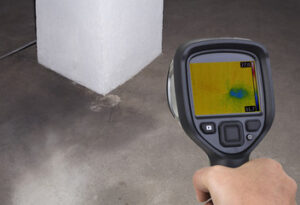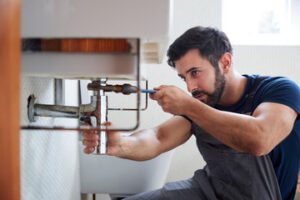Liquid Waste Disposal Perth is the process of removing and transporting liquid waste. This waste is typically generated by medical facilities, tattoo and body piercing, and many other businesses.

It’s important to have a good liquid waste system in place so you can mitigate environmental risks and abide by regulations. This includes knowing what types of liquid waste to store, and how to treat and dispose of them.
Flammable liquid waste is a hazardous material that must be handled and disposed of in accordance with specific regulations and guidelines. Failure to do so can result in accidents, fires and environmental damage.
Hazardous materials such as chemicals and solvents can pose a danger to human health, the environment, or property. If left untreated or discarded improperly, these substances can leach into the surrounding soil and water, contaminating ecosystems. To prevent contamination, it is important to use flammable bins to contain and isolate chemical waste and to follow proper chemical segregation techniques for safe storage.
Chemicals and solvents are often used in the manufacturing of a variety of products, from food and pharmaceuticals to cosmetics and automotive fuel. Because of this, many facilities produce a significant amount of flammable liquid waste. To manage this risk, it is essential to keep a close eye on the inventory and ensure that all liquid waste containers are emptied and sealed promptly after each use.
All flammable and combustible liquid wastes should be kept in a leak proof secondary container, with a cap that is tightened securely (preferably screw-top) at all times. In addition, all containers should be labelled and a satellite accumulation area established adjacent to the process that generates the waste (e.g. acids from bases). Containers and the satellite accumulation area must be inspected at least weekly for leakage and filled to 90% capacity to prevent spilling.
Flammable liquids can quickly cause accidents, fires, and explosions if they are not disposed of properly. To protect yourself and others, you should wear personal protective equipment, such as gloves, goggles, and flame-resistant clothing when handling flammable liquid waste. Additionally, you should only store liquid wastes in containers that are compatible with the chemical. For example, you should never store acids that corrode metal in plastic containers or acid solutions with caustics in glass bottles.
In addition, you should keep in mind that liquids may have different flash and boiling points depending on their temperature and atmospheric pressure. This is why it is important to know how to determine which container is best for each substance. Lastly, you should always leave 1-2” of head space in liquid waste containers to allow for expansion in extreme weather and reduce the chance of spills. Incompatible wastes should be separated at all times, as acids with caustics and flammables with oxidizers can react to form toxic fumes that are dangerous for both people and the environment.
Non-Hazardous Liquid Waste Disposal
Certain classes of liquid chemical waste cannot be poured down the drain and must be collected, managed and disposed of as hazardous waste. They include flammables with a flash point less than 140°F (including waste gasoline, kerosene, naphtha and fuel oil), toxic acids, bases and metal salt solutions, and solvents (except organic peroxide). Corrosive materials are also classified as hazardous waste. These chemicals must be brought to the quarterly hazardous waste pickups held at the Plant Biotechnology Building and the Veterinary School and turned over to the contractor for disposal.
All chemical waste must be stored using proper chemical segregation to prevent mixing incompatible materials together. Many chemicals, if mixed, will react to generate heat, toxic gases and/or explode. Chemical compatibility information is available from the safety office and should be used when storing chemical waste. For example, nitric acid/organic waste mixtures and hydrogen peroxide solutions are known to generate gases that can pressurize the waste bottle and cause it to explode. Use vented caps (available from the safety office) for these wastes to avoid pressure buildup and explosions.
When storing liquid or solid chemical wastes, make sure that they are placed inside leak proof secondary containment. This should be a tub, sturdy box, or other container that is strong enough to hold the contents without leaking and spilling.
Keep in mind that hazardous and non-hazardous waste streams should not be co-mingled, as the resulting waste will require special treatment at the disposal facility and is often more costly to process. Non-hazardous and hazard waste streams should only be commingled when the waste is being transferred between containers (for example, from a bottle to a tub).
Always close and label your chemical waste containers tightly. Store them in a well-ventilated area and out of the reach of children. Remember, if a hazardous waste container is opened and the contents are drained, this will count as an accidental discharge that must be reported in accordance with EH&S’s Accidental Discharge procedure. For all hazardous waste, containers should be closed and sealed with a cap after every use.
Biohazardous Liquid Waste Disposal
The disposal of regulated medical waste (RMW) is strictly regulated and requires special containers for collection. This includes any item that may carry an infectious organism that poses a threat of disease transmission or risk to the environment, including human blood, bodily fluids and tissues, pasteur pipettes, and cultures.
Principal investigators, laboratory safety officers, and lab personnel are responsible for identifying and decontaminating regulated medical waste before disposal. This includes identifying the type of organism or agent and either chemical inactivation or steam sterilization (autoclaving). RMW also includes recombinant DNA/synthetic nucleic acid molecules, and exotic or virulent plant or animal pathogens.
Liquid biohazardous waste is collected in leak proof autoclavable bags that are clearly marked with the universal biohazard symbol. These are available at most supply houses for purchase. It is important to note that liquid biohazardous waste must be inactivated using a disinfectant such as bleach before being poured down the drain. Alternatively, it can be sprayed with sodium hypochlorite and allowed to soak for an appropriate amount of time in a chemical fume hood.
Solid biohazardous waste is placed in a red bag and labeled with the universal biohazard symbol. This waste is either autoclaved on site or taken to an offsite vendor for processing. In some cases, a mix of solid and liquid biological waste is generated. When this occurs, it is important to segregate the waste to avoid creating a mixed waste. If the waste is associated with a phenol extraction, it can be considered hazardous chemical waste and should be disposed of in a chemical container.
Any liquid waste that does not meet the criteria of a biohazardous waste is discarded as normal waste. However, if the waste is associated with chemicals or radioactive material it should be disposed of according to their respective waste management policies. Some labs are required to use certain procedures that generate “mixed” wastes. These wastes include those that are both flammable and toxic, such as those resulting from a chromatography experiment. It is important to consult with EH&S in advance of such experiments, and a waste management plan should be developed that takes into consideration all the potential waste streams that will be produced.
Specialized Liquid Waste Disposal
Most businesses will produce some liquid waste as a by-product of their operations. While many will try to minimise the quantity and toxic nature of this waste, it is often unavoidable. In these cases, liquid waste disposal must be safe for workers and the environment. It is important for businesses to follow proper guidelines and use efficient practices for waste removal.
Hospitals generate a large amount of liquid waste, from expired medications to contaminated chemical solutions. Keeping up with innovative technologies and effective waste segregation is essential for hospitals to minimize the impact on the environment.
The flammable and hazardous materials found in this type of waste need to be carefully handled by trained professionals. Usually, the liquid will undergo a specialized treatment process to ensure it is properly disposed of without risking the surrounding environment or public health.
This type of liquid waste includes solvents and caustic chemicals used in the production of certain industrial products. While the toxins are safe for humans in small quantities, they can be very dangerous for the surrounding environment when not properly disposed of. These substances need to be disposed of using a highly regulated system, so the local water supply is protected and the environment is not impacted.
Liquid waste from commercial industries may include corrosive acids and other harsh chemicals. Generally, these chemicals will be diluted with water to lower their toxicity before being taken to the wastewater treatment plant for processing. Industrial waste also includes oil, sewage, and other liquids that are byproducts of the manufacturing process.
Sewage disposal trucks, also known as vacuum trucks or septic tanks, are a special type of truck equipped with powerful suction systems to suck up waste from septic tanks and other waste-holding facilities. The waste is then transferred to a specialized tank where it is held until it can be transported to a sewage treatment plant for purification and disposal.
Businesses can reduce their environmental liability by choosing a specialist liquid waste disposal service that offers a fully licensed controlled waste carrier solution. By following the proper liquid waste management practices, these services can protect the local environment and help you comply with legislation. They can even assist with emergency spills and floods that might occur on your property, quickly cleaning the waste to avoid any environmental damage.




